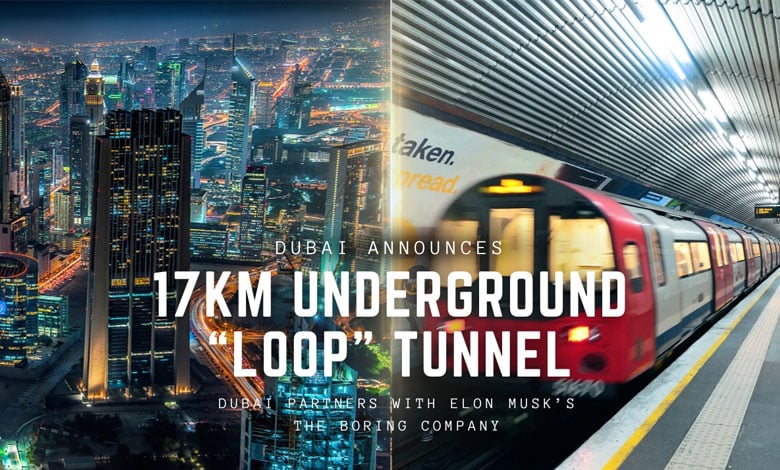Dubai Loop: Elon Musk’s 17km Underground Tube to Transport 20,000 Passengers Hourly
Dubai partners with Elon Musk’s Boring Company to build a 17km underground tunnel system with 11 stations, revolutionizing urban mobility and easing traffic congestion.

Dubai’s Roads and Transport Authority (RTA) has partnered with Elon Musk’s The Boring Company to develop the Dubai Loop, a 17-kilometer underground transportation system designed to move over 20,000 passengers per hour across 11 stations.
The project, announced at the 2025 World Governments Summit, aims to revolutionize urban mobility by reducing travel time and traffic congestion in the city’s busiest areas.
Table of Contents
Key Features of the Dubai Loop
- 17km tunnel network connecting densely populated neighborhoods.
- 11 stations for seamless point-to-point travel.
- Electric vehicles traveling at speeds up to 160 km/h, ensuring zero emissions.
- Capacity to transport 20,000 passengers hourly, expandable to 100,000 in future phases.
- Minimal surface disruption due to advanced tunnel-boring technology.
*Sheikh Hamdan bin Mohammed, Crown Prince of Dubai, emphasized the project’s alignment with Dubai’s vision for *sustainable, cutting-edge mobility solutions. “This partnership reflects our commitment to setting global benchmarks in urban connectivity,” he stated.
Why Underground? Musk Explains
Elon Musk described the Dubai Loop as a “wormhole” for urban transport, enabling passengers to “instantly” traverse the city. He highlighted advantages over aerial solutions:
- Weather resistance: Operates during sandstorms or heavy rain.
- Noise reduction: Quieter than flying taxis or helicopters.
- Safety: Protected from extreme heat and external hazards.
The Boring Company will deploy its custom Tunnel Boring Machines (TBMs) and vertically integrated construction approach to reduce costs and accelerate timelines. Similar systems, like the Las Vegas Loop, have already transported 2 million passengers since 2021.
Sustainability and Economic Impact
The Dubai Loop aligns with the Dubai Clean Energy Strategy 2050, using electric vehicles and energy-efficient infrastructure. Mattar Al Tayer, RTA Director General, noted the project’s focus on rapid execution and minimal environmental impact compared to traditional methods.
What’s Next?
While construction timelines remain undisclosed, the Memorandum of Understanding (MoU) signed at the summit paves the way for feasibility studies and technical collaboration. The project is part of Dubai’s broader strategy to integrate AI-driven transport solutions, including the solar-powered RAILBUS and the Dubai-Abu Dhabi Sea glider.
The Dubai Loop underscores the UAE’s ambition to lead in futuristic urban planning. As Musk quipped, “Once people try it, they’ll say, ‘Wow, this is really coo
